Côte des Bar For The Course: Champagne Fleury, An Ecological Pioneer Is In Pursuit Of “Understanding And Enhancing Terroir’s Character” Eleven New Releases
Although it sounds a bit contradictory, ‘doing what comes naturally’ is often an exacting science and a dedicated quest, and nowhere in Champagne is this more evident than in the fields and cellars of Domaine Fleury, the Côte des Bar foremost champion of ‘The Art of Nature.’
Founded in 1895 in the heart of the Côte des Bar and driven by the terroir of the clay-limestone hillsides formed by the first tributaries of the Seine, Fleury has a storied history in the region, managing to weather both the phylloxera crisis and the market crash of 1929. But according to Jean-Pierre Fleury, it was biodynamics over all else that gave new meaning to Champagne production: “To be respectful of the natural and living heritage of this terroir, where custodians of the land forever learn, in all humility, to perceive the balance and to unearth its mysteries.”
Gone entirely biodynamic by 1992—a time when the concept was foreign to nearly every winemaker in France—Jean-Pierre has passed the spirit of purity and innovation to his children: Morgane Fleury, an actress and sommelier, who has developed a new concept of an ecological wine and champagne bar in central Paris; Jean-Sébastien, also at the heart of innovation at the domain, who is experimenting with grafting techniques in the vines as well as reintroducing horses to work on certain plots; Benoît, who is currently working with massale selection and agro-forestry as new ways of cultivating the vines in symbiosis with an adapting environment.
Biodynamic practices remain the focus of virtually every decision made at Fleury: According to Jean-Pierre Fleury, who passed away in 2023, “This idea of nature’s unity and the interdependence between the earth’s life forces has become central to everything we do. It simultaneously encompasses humility by questioning certain convictions or conventions, observation skills and a new way to care for plants and soils, the latter being the source of a plant’s balance. Biodynamic agriculture involves coordinating the element’s relation, exchange, affinity and also repulsion with cosmic rhythms.”
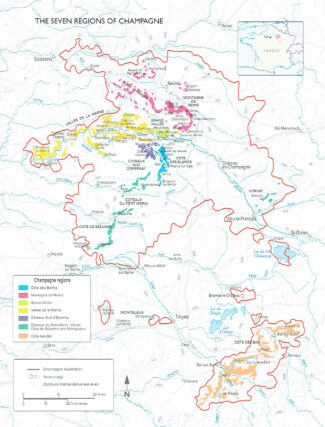
South Rising: Aube’s Côte des Bar
There is a certain ignominy in being Aube. Ninety miles south of Épernay, there have been times when its very inclusion in the Champagne appellation has been cast into doubt: In 1908, for example, Champagne Viticole was defined as 37,000 acres in the Marne and the Aisne, with the Aube département excluded. The effervescent French do not take such face-slaps lightly, and after a series of riots, a new legal delimitation of Champagne was drawn in 1927, delineating its modern boundaries—85,000 acres that this time included the Aube and its most heralded subzone, the Côte des Bar.
Even so, the échelles des crus ranking offered none of Aube’s villages the prestige of Grand Cru or Premier Cru ranking. This didn’t help in removing the stigma of being Champagne’s Pluto, and it has only been fairly recently that progressive—even iconoclastic winemakers— have thrust the region into the spotlight. Today, the Côte des Bar makes up 23% of Champagne’s output, and the past 20 years have seen its vineyard surface grow by more than three thousand acres.
Champagne Fleury
“Let Nature and Its Rhythms Express Themselves.”
If any estate is anchored to the Côte des Bar it is Champagne Fleury, whose Courteron vineyards span 38 acres on a clay-limestone hillside along a tributary of the Seine. But, as the first Champagne house to convert to biodynamics (1989), Jean-Pierre Fleury proved that a producer can have roots in the earth while raising the mainsail to innovation.
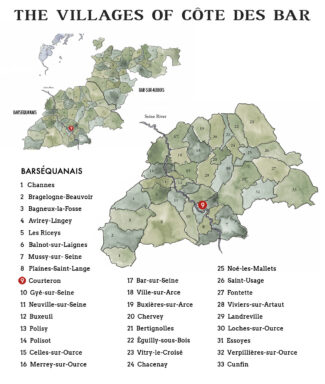
Today, his son Jean-Sébastien Fleury has taken the winemaking rudder, and is tacking toward the future with respect for the unique situation of the Côte des Bar, which is closer to Chablis than to Reims. “The key is soil health,” he says. “We must keep the earth healthy. The structure of the soil gives back the essence of the terroir.”
In this endeavor, he is joined by his younger brother Benoît, who came on board in 2010 to manage the vineyards, intent not only on maintaining biodynamics, but also researching soil biology, biodiversity and experimenting with agro-forestry. A third sibling, Morgane, initially studied to be an actress and a sommelier in Suze-la-Rousse, runs ‘My Cave Fleury’ in Les Halles (made famous by Émile Zola’s famous novel of the same name) where she specializes in biodynamic wines.
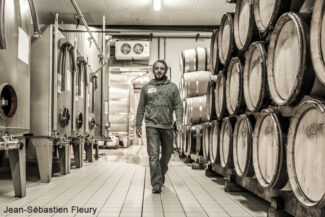
The estate encompasses ten plots planted primarily to Pinot Noir, the oldest planted in 1970, and new cuttings are established every year to maintain the vitality that younger vines bring to Champagne. The ultimate goal, according to Jean-Sébastien is a wish “to let the nature and its rhythms express themselves.”
Appreciate the Balance and Share the Mysteries of Nature
The Japanese have long espoused a mystical connection between the earth and sky; a spectacle of nature and the subtle balance that prevails between tradition and modernity. That is a philosophy that winemaker Jean-Sébastien Fleury grew up with. His father, Jean-Pierre, who originally wanted to be an astronomer, embraced the concept that every human on earth has a small but essential role in maintaining the harmony of the universe, and fell in love with cultures founded on principles of equity, between people and with the land, and decided early to raise his family in physical and spiritual health.
Champagne is especially suited to this thought process; at its core, it is an attempt to find a nearly magical equilibrium between nature and man’s ability to enhance it. An understanding of the microcosm and the macrocosm is essential to a biodynamic vision, and as an homage to the interdependence of earth and sky, Fleury vineyard practices seemed—in the last century—as almost druidic, although they are now being embraced throughout France.
Enhancing and Understanding Terroir’s Character
Reims lies at Latitude 49°5, and Épernay at 49°; in the northern hemisphere, it is generally considered difficult to obtain quality grapes at the 50th parallel and above. The ninety mile cushion enjoyed by Côte des Bar has a pronounced effect on the grower’s ability to ripen Pinot Noir; as a result, 86% of the vineyards are planted to this varietal. Despite this, the soils of the Côte des Bar is closer to that of Chablis—Kimmeridgian marl topped by Portlandian limestone, whereas the vines near Épernay and Reims tend to be planted in Cretaceous chalk. Chablis, of course, is ground zero for Chardonnay, and it is humidity coming from the Atlantic in the west as well as continental influences with higher temperatures that make the Côte des Bar Pinot Noir country through and through. That said, local climate conditions, slope and orientation are extremely varied throughout region, and produces many individual micro-climates, so each vigneron needs to be fully attentive to his own terroir in order to make the most of it. Côte des Bar features a host of small producers whose output varies almost as much as the local landscape.
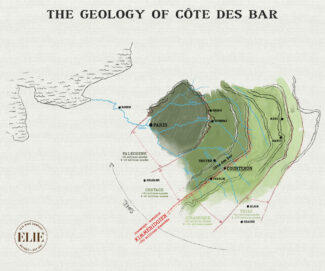
The Biodynamic Principles: Respecting Earth’s Life Forces
The Fleury family looks at the estate as a living organism and pampers it as one might a beloved family pet. “We have been cultivating our land in line with its habitat for more than thirty years, acknowledging nature’s rhythms and the influence of terrestrial and cosmic forces. At first, this agricultural principle may seem demanding and esoteric, but it is truly a virtuous circle. We envision wine as a support of nature’s creation that undeniably enhances the product we bottle. All wines are labeled ‘Organic Agriculture TM’ and ‘Biodynamic.’”
Fleury delves deeper: “A vineyard is a monoculture, so our work is directed toward increasing biodiversity. Our viticultural work is focused on both the soil and the plant. Cultivation is done by hand in addition to the application of biodynamic preparations. Vine work is synchronized with planetary and lunar cycles; this is based on the effects these heavenly bodies have on root, leaf, flower and fruit development. For example, vine suckering, de-leafing and de-budding is done on ‘leaf day’ in the lunar calendar. The grafts and harvest is done in accordance with the lunar spring, when the moon is rising, a time that favors heavy sap flow. The lunar fall, when the moon is descending, is the best time for pruning.”
Vinification at the Winery: Producing Earth’s Best
“Our slow aging process is a symbolic return to the earth,” says Jean-Sébastien Fleury, referencing the biodynamic methods that result in wines with an improved balance between sweetness and acidity compared to other wines. “In our Domain, these characteristics allow us to leave the bottles to age in our cellar for a longer time of 3 to 5 years for the Blanc de Noirs, Fleur de l’Europe and Rosé, and 6 to 10 years for the Millésimes. This slow aging process that is an essential step before revealing the wine during the tasting. Aging before beginning a new life symbolizes another cycle of nature and of the cosmos.”
Champagne’s Primary Grapes and Heirloom Varieties
The vast majority of Champagne is made from one or more of the Big Three, chosen in late 19th century as grape varieties that offer the best balance of sugar and acidity to complement the effervescence. First, Pinot Noir, which dominates the holdings in the Côte des Bar, where it is sometimes called Précoce due to its ability to ripen early. When allowed to thrive in cool, chalky soil, Pinot Noir endows Champagne with body, punch and structure. Chardonnay is also an early ripening variety, particularly well-suited to terroirs which lie on an outcrop of chalk, and yields delicately fragrant wines with floral, citrus and mineral notes and produces wines that age well. The trio is rounded out by Meunier, a hardy grape that is compatible with soils containing more clay, such as in the Marne Valley, where it is frequently considered an insurance grape against poor vintages since it buds later and is more accepting of cooler mesoclimates.
In terms of climate and attitude, no place in Champagne is more hospitable to heirloom grapes than the Côte des Bar; overall, more than 250 acres of vineyard is dedicated to Pinot Blanc (locally called Blanc Vrai), Pinot Gris (Fromenteau), Arbane and Petit Meslier.
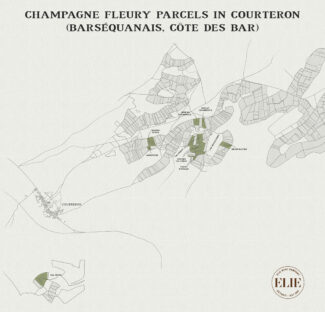
Chardonnay – ’White Rainbow’
Since virtually all Champagne not designated ‘rosé’ appear pale and straw-colored in the glass, it is sometimes assumed that white wine grapes are predominant in the region. In fact, Chardonnay is the least widely planted of the Big Three, and finds its most reliable stronghold in the north where the Côte des Blanc provides a home-base on an extension of the same chalk outcrop that runs through Chablis.
Despite being less represented in the southern part of Champagne, there still pockets of resistance where Chablisienne terroir prevails, especially those anchored off the slopes of Champraux.
 Champagne Fleury ‘Cépages Blancs’, 2011 Côte-des-Bar Extra-Brut ($105)
Champagne Fleury ‘Cépages Blancs’, 2011 Côte-des-Bar Extra-Brut ($105)
100% Chardonnay vinified 50% in oak; bottled 07/2012, disgorged 12/2022; dosage, 2 gram/liter.
The old-vine vineyards blended to make this wine are planted in Kimmeridgian limestone in the lieux-dits of Champraux and Valprune; the wine displays superb dried fruits aromas with licorice and praline, the wine is redolent of almonds, peach and white flowers.
*click photo for more info
Pinot Gris – ‘Return Of The Eclipse’
300 years ago, the early-maturing Pinot Gris (then called ‘Fromenteau’) made up 50% of the vineyards in Champagne and even today, the pink-skinned Pinot Noir mutation accounts for about 14% of the vineyard plantings. In Champagne, it can often be identified by the notes of honey and almond it lends to a cuvée.
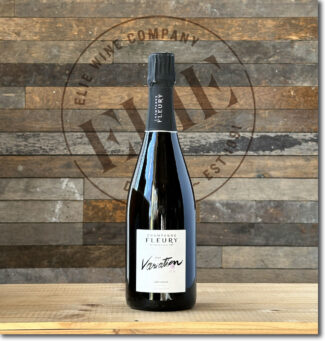 Champagne Fleury ‘Variation’, 2015 Côte-des-Bar Brut-Nature ($120)
Champagne Fleury ‘Variation’, 2015 Côte-des-Bar Brut-Nature ($120)
100% Pinot Gris vinified in thermo-regulated vats. Bottled 10/2016; Disgorged 05/2021; dosage, 0 gram/liter.
Planted in 2010, harvested in 2015, this wine is made without sulfites and after five years aging, receives zero dosage. It is the second release of this unique biodynamic Pinot Gris; the mouth is rich and alive with a bright mousse, shows apple notes, bright stone fruit, soft spice and salinity.
*click photo for more info
Pinot Blanc – ‘Memory Of A Star’
Originating in Alsace, Pinot Blanc can be a problem child easily corrupted by disease and mutation, the result of its large berries and unstable relationship with parent Pinot Noir. Yet its value remains in its low sugar/acid ratio and it’s floral, green apple flavor profile.
 Champagne Fleury ‘Notes Blanches’, 2015 Côte-des-Bar Brut-Nature ($99)
Champagne Fleury ‘Notes Blanches’, 2015 Côte-des-Bar Brut-Nature ($99)
100% Pinot Blanc with 50% oak élevage. Bottled,10/2016; disgorged,12/2022; dosage, 0 gram/liter.
Emile Fleury, who founded the domain, was a champion of Pinot Blanc—a well-known varietal in Alsace and a hidden gem in Champagne. Morgane Fleury’s vision of creating a monovarietal cuvée using 100% Pinot Blanc from lieux-dits Charme de Fin and Valverot is a rare and expressive experience.
Made from 25-year-old vines, ‘Notes Blanches’ is from the 2015 vintage; it shows creamy lemon and toasted bread on the nose. The palate is filled with tension and elegance, with a fine mousse and mineral finish.
*click photo for more info
Pinot Noir Country: Côte-des-Bar Takes Cues From Burgundy
So obsessed was the Aube on becoming part of Champagne that they fought back; 40,000 French soldiers were required to quell the violence. Still, like a child who denies his roots, the flavors of Burgundy can be tasted in most aspect of the region—traditions, architecture, cuisine and winemaking.
Most growers in Aube’s vineyard acres trained in Burgundy, and the luxurious Champagnes the region is capable of carry both the precision and minerality of Kimmeridgian limestone—often so close to the surface that no soil is evident and the vines appear to be planted in lunar bedrock—which is the identical foundation for the Grand and Premier Crus of Chablis. Puligny-Montrachet barrels are often used in cellars and biodynamics—much more prevalent in Burgundy than in Champagne—are becoming increasing indispensable to young winemakers in the Côte des Bar. It is, in part, this tension—the tug of war between Champagne and Burgundy—that creates the marvelous electricity of Côte des Bar wines.
‘Planet Pinot Noir’
 Champagne Fleury ‘Blanc de Noirs’, Côte-des-Bar Brut ($56)
Champagne Fleury ‘Blanc de Noirs’, Côte-des-Bar Brut ($56)
100% Pinot Noir with 62% harvested in 2018, perpetual reserve for the balance. Bottled 10/2019; disgorged 01/2023; dosage, 4.7 gram/liter.
Created in 1955 by Robert Fleury, this traditional cuvée was re-labeled ‘Blanc de Noirs’ in 2010. Delicate aromas of white peach and iris appear on the nose, while the body shows black cherry and a hint of tart cranberry behind an elegant, zesty and bright bead.
*click photo for more info
‘Notes Of Twilight’
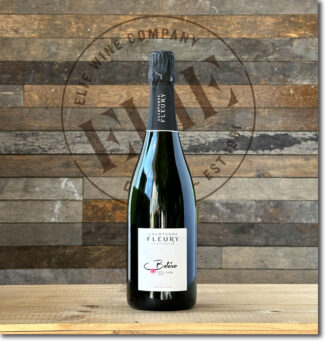 Champagne Fleury ‘Boléro’, 2008 Côte-des-Bar Extra-Brut ($130)
Champagne Fleury ‘Boléro’, 2008 Côte-des-Bar Extra-Brut ($130)
100% Pinot Noir with 30% élevage in oak. Bottled 12/2009; disgorged 12/2022; dosage 0 gram/liter.
Formerly called ‘Millésimé’ (when it contained a small amount of Chardonnay), the cuvée became pure Pinot Noir in 2004. Aged nine years on lees, it is the brainchild of Benoît Fleury, and drawn from four plots—Charme de Fin, Champreaux, Meam Bauché and Montégné. It exhibits complex scents of toasted almond, apricot and freshly-baked bread followed by a lengthy, mineral-driven finish. shows interwoven aromas of dried fruits, toasted almonds, apricots and freshly-baked bread followed by juicy stone fruits wrapped in crystalline effervescence.
*click photo for more info
‘When Mars Meets Venus’
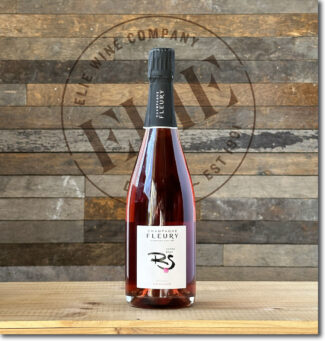 Champagne Fleury ‘Rosé de Saignée’, Côte-des-Bar Brut ($76)
Champagne Fleury ‘Rosé de Saignée’, Côte-des-Bar Brut ($76)
100% Pinot Noir vinified in thermo-regulated vats. From the 2018 harvest; bottled 07/2019; disgorged 10/2022; dosage 3.4 gram/liter.
The grapes see a short period of maceration before pressing—the production method called saignée. It produces a light, lyrical sparkling wine whose dosage has been gradually reduced over the years; the wine is redolent of strawberry compote and vanilla, with a rich palate that maintains both elegance and delicacy.
*click photo for more info
Coteaux-Champenois: Still Champagne
Coteaux-Champenois is a unique AOP dedicated entirely to non-effervescent Champagne. It may be red, white or rosé, although the lion’s share is red—Bouzy rouge being the most celebrated. With a warming climate ripening grapes more consistently, Coteaux-Champenois is becoming positively trendy and producers across the 319 communes entitled to make wines under the Coteaux Champenois appellation are becoming better known.
Like their fizzy sisters, still wines from the region tend to be dry and light-bodied with naturally high acidity. The reds are better in warmer vintages, which is why the predominant red variety, Pinot Noir, is currently basking in the newfound heat waves of northern France. The reason that 90% of the Coteaux Champenois output is red is not necessarily because the terroir has traditionally favored Pinot Noir, but because locally grown Chardonnay has commanded a higher price when sold to Champagne houses.
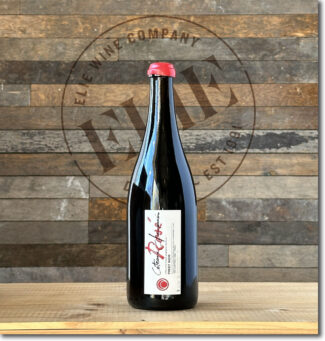 Domaine Fleury, Coteaux-Champenois Rosé ‘Côte-des-Bar’ ($68)
Domaine Fleury, Coteaux-Champenois Rosé ‘Côte-des-Bar’ ($68)
Comprised of vintages 2017, 2018 and 2019 hand-harvested 35 to 40 years old Pinot Noir vines, fermented spontaneously with low-intervention, bottled unfined and unfiltered. The wine offers a nose of Maraschino cherry, strawberry and lemon zest while the fruit-driven palate had notes of cherry and raspberry behind bright acidity.
Predominantly Pinot Noir: Blended for ‘Subtle Alchemy’
Champagne should illustrate the word ‘synergy’ above all, where the sum of the total is greater than the individual parts. The ideal blend should be the aggregation of positive components; every thread should add to the tapestry’s whole. The blend should always drive toward harmony; Chardonnay is often up front, while Pinot Noir supplies the middle and finish. Other allowable varietals should only appear if they contribute to the primary blend.
This is not a universal outcome, of course, and according to Jean-Marc Lallier of Champagne Deutz, “Some winemakers do not blend; they mix.”
When cellar masters do it right, it is a painstaking undertaking; every tank, barrel and vat is tasted countless times to assess which batch would enhance which. This is the true art of Champagne making—the intimate familiarity with each component in order to align them perfectly.
View Champagne Fleury cuvée blends over the years here.
‘Where The Sun Meets The Moon’
 Champagne Fleury ‘Fleur de l’Europe’, Côte-des-Bar Brut-Nature ($61)
Champagne Fleury ‘Fleur de l’Europe’, Côte-des-Bar Brut-Nature ($61)
85% Pinot Noir, 15% Chardonnay, 54% from the 2017 harvest; 40% received élevage in oak. Bottled 07/2018; disgorged 01/2023; dosage 0 gram/liter.
The first biodynamic cuvée in Champagne, the name references the generation that witnessed the fall of the Berlin Wall and results from a special pressing of the grapes that reserves the optimum juice. The wine displays silken notes of green apple and peach with warm brioche on the nose and persistent pinpoint bubbles throughout the palate.
*click photo for more info
‘Cosmic Symphony’
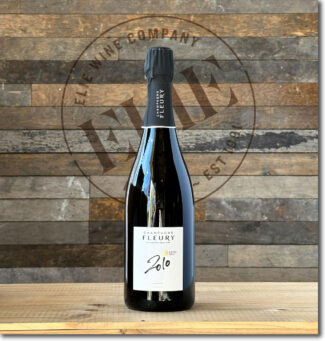 Champagne Fleury, 2010 Côte-des-Bar Millésime Brut ($110)
Champagne Fleury, 2010 Côte-des-Bar Millésime Brut ($110)
80% Pinot Noir, 20% Chardonnay with 60% in bottle with corks during second fermentation. Bottled 12/2013; disgorged 09/2022; dosage 3 gram/liter.
The grapes come from 20-year-old vines, the first declared vintage for Fleury since 2004. The old vines give intensity and toasty character to the palate, which is full of honey-nut spiciness with hints of smoke behind citrus/apple flavors.
*click photo for more info
‘Little Music For Time And Space’
 Champagne Fleury ‘Sonate’, 2013 Côte-des-Bar Extra-Brut ($105)
Champagne Fleury ‘Sonate’, 2013 Côte-des-Bar Extra-Brut ($105)
92% Pinot Noir, 8% Pinot Blanc bottled 07/2014, disgorged 10/2022 and dosed at 0 gram/liter.
Sonate is the fourth edition of sulfite-free wine. From plots in Champraux, Valprune and Charme de Fin, the vines average 35 years of age. The wine is loaded with aromatic richness, opening with aromas of acacia, daffodil and citrus peel behind ripe peach and a characteristic note of quince jelly.
*click photo for more info
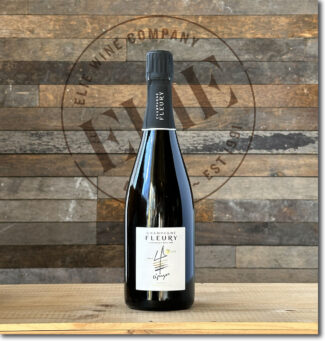 Champagne Fleury ‘4 Cépages’, 2014 Côte-des-Bar Brut-Nature ($130)
Champagne Fleury ‘4 Cépages’, 2014 Côte-des-Bar Brut-Nature ($130)
58% Pinot Noir, 25% Chard, 12% Pinot Blanc, 5% Pinot Gris (the four ‘cépages’, or grapes), harvested in 2014, bottled 07/2015 and disgorged 01/2022 with 0 gram/liter dosage.
The wine has a notably complex nose of toasted nuts, fresh pastry and apricot marmalade with a sensationally rich palate dominated by citrus, honeycomb, saffron, apricot and candied cashews.
*click photo for more info
Notebook …
Single Harvest vs. Vintage
In France, under Appellation d’Origine Portégée (AOP) rules, vintage Champagnes must be aged for three years—more than twice the required aging time for NV Champagne. The additional years on the yeast is said to add complexity and texture to the finished wine, and the price commanded by Vintage Champagne may in part be accounted for by the cellar space the wine takes up while aging.
On the other hand, a Champagne maker might prefer to release wine from a single vintage without the aging requirement; the freshness inherent in non-vintage Champagnes is one of its effervescent highlights. In this case, the wine label may announce the year, but the Champagne itself is referred to as ‘Single Harvest’ rather than ‘Vintage’.
Vintage Journal
2018
An outstanding vintage for Champagne, producing both quality and quantity. A few isolated hailstorms led to some crop loss, notably in the Côte des Bar, but fortunately, early summer brought hot, sunny and dry days. Occasional showers were welcome relief to parched vines and kept hydric stress at bay, allowing for optimal ripening at a gradual pace in ideal conditions that resulted in an early harvest.
2017
2017 was a vintage that managed (in some areas) to seize defeat from the jaws of victory. A promising start was compromised by August rains which prompted an outbreak of botrytis. This meant the harvest had to be carried out fast and for some producers, it was the shortest on record. Chardonnay tended to be uniformly good and there was also some extremely good Pinot Noir. It was Pinot Meunier that tended to suffer the most, with many grapes overripe.
2015
A wet winter and mild spring gave way to an exceptionally dry summer from mid-May onwards, and hot weather prevailed until mid-August, when heavy rains fell. Rains gave way to fine, cool, yet sunny weather for the first two weeks of harvest, which began on August 29th.
2013
2013 saw a cool spring followed by a cool summer, with delayed flowering and an onset of millerandage and coulure due to the cool temperatures, cutting yields. However, the reduced crops tended to ripen more easily during what would transpire to be a long growing season. Chardonnay was the strongest performer with some great examples coming from the Côtes des Blancs as well as from the Marne Valley. However, Pinot Noir from Aÿ was also very good.
2012
Like 2008, 2012 was a difficult growing season, with severe frosts in the winter. March brought warmth but early bud break made the vines vulnerable. Overall, the early growing season was wet, with mildew a serious issue, however, conditions improved dramatically in the summer months. An August heatwave resulted in a rapid accumulation of sugar, but the nights remained cool, which preserved acidity. Although yields were low due to the early frost, later hail and disease pressures, the 2012 harvest was exemplary in its maturity, acidity and grape health.
2011
Following a warm, early spring and a cool, damp summer season, 2011 was one of the earliest Champagne harvests in history. Patience and fierce selection at harvest time turned out to be the winning recipe.
2010
Dry conditions hindered grape development early in the season, and after a hot summer, torrential rain in mid-August caused widespread disease pressure. The ripeness of the grapes was good and the acidity remained high despite the warm season, but as a combined consequence of the challenges of the growing season, the global financial crisis and the cellars bursting with fine 2008 and 2009 vintage bottles, few houses declared 2010 a vintage. The ones who did, did so so for a reason.
2008
Initially a difficult, damp year with widespread mildew, expectations for 2008 were low. However, drier conditions in August and a fine, warm September with cool nighttime temperatures proved to be the saving grace. Harvest began on September 15th and it quickly became known as an outstanding year, due to the finesse brought about by the fine, saline freshness and purity of fruit. A dream-come true vintage in many aspects, 2008.
Drawing The Boundaries of The Champagne Region
To be Champagne is to be an aristocrat. Your origins may be humble and your feet may be in the dirt; your hands are scarred from pruning and your back aches from moving barrels. But your head is always in the stars.
As such, the struggle to preserve its identity has been at the heart of Champagne’s self-confidence. Although the Champagne controlled designation of origin (AOC) wasn’t recognized until 1936, defense of the designation by its producers goes back much further. Since the first bubble burst in the first glass of sparkling wine in Hautvillers Abbey, producers in Champagne have maintained that their terroirs are unique to the region and any other wine that bears the name is a pretender to their effervescent throne.
Having been defined and delimited by laws passed in 1927, the geography of Champagne is easily explained in a paragraph, but it takes a lifetime to understand it.
Ninety-three miles east of Paris, Champagne’s production zone spreads across 319 villages and encompasses roughly 85,000 acres. 17 of those villages have a legal entitlement to Grand Cru ranking, while 42 may label their bottles ‘Premier Cru.’ Four main growing areas (Montagne de Reims, Vallée de la Marne, the Côte des Blancs and the Côte des Bar) encompass nearly 280,000 individual plots of vines, each measuring a little over one thousand square feet.
The lauded wine writer Peter Liem expands the number of sub-regions from four to seven, dividing the Vallée de la Marne into the Grand Vallée and the Vallée de la Marne; adding the Coteaux Sud d’Épernay and combining the disparate zones between the heart of Champagne and Côte de Bar into a single sub-zone.
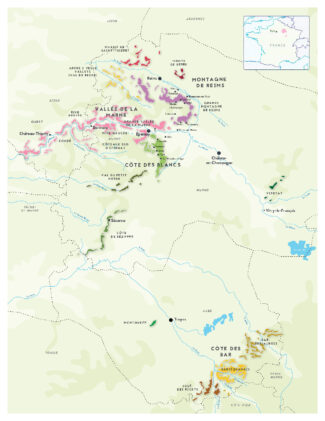
Courtesy of Wine Scholar Guild
Lying beyond even Liem’s overview is a permutation of particulars; there are nearly as many micro-terroirs in Champagne as there are vineyard plots. Climate, subsoil and elevation are immutable; the talent, philosophies and techniques of the growers and producers are not. Ideally, every plot is worked according to its individual profile to establish a stamp of origin, creating unique wines that compliment or contrast when final cuvées are created.
Champagne is predominantly made up of relatively flat countryside where cereal grain is the agricultural mainstay. Gently undulating hills are higher and more pronounced in the north, near the Ardennes, and in the south, an area known as the Plateau de Langres, and the most renowned vineyards lie on the chalky hills to the southwest of Reims and around the town of Épernay. Moderately steep terrain creates ideal vineyard sites by combining the superb drainage characteristic of chalky soils with excellent sun exposure, especially on south and east facing slopes.
… Yet another reason why this tiny slice of northern France, a mere 132 square miles, remains both elite and precious.
- - -
Posted on 2024.02.21 in France, Champagne, Wine-Aid Packages
Featured Wines
- Notebook: A’Boudt Town
- Saturday Sips Wines
- Saturday Sips Review Club
- The Champagne Society
- Wine-Aid Packages
Wine Regions
Grape Varieties
Albarino, Albarín Blanco, Albarín Tinto, Albillo, Aleatico, Aligote, Arbanne, Aubun, Barbarossa, barbera, Biancu Gentile, bourboulenc, Cabernet Franc, Caino, Caladoc, Calvi, Carcajolu-Neru, Carignan, Chablis, Chardonnay, Chasselas, Cinsault, Clairette, Corvina, Counoise, Dolcetto, Erbamat, Ferrol, Frappato, Friulano, Fromenteau, Gamay, Garnacha, Garnacha Tintorera, Gewurztraminer, Graciano, Grenache, Grenache Blanc, Groppello, Juan Garcia, Lambrusco, Loureira, Macabeo, Macabou, Malbec, Malvasia, Malvasia Nera, Marcelan, Marsanne, Marselan, Marzemino, Mondeuse, Montanaccia, Montònega, Morescola, Morescono, Moscatell, Muscat, Natural, Niellucciu, Parellada, Patrimonio, Pedro Ximénez, Petit Meslier, Petit Verdot, Pineau d'Aunis, Pinot Blanc, Pinot Gris, Pinot Meunier, Pinot Noir, Pouilly Fuisse, Pouilly Loche, Poulsard, Prieto Picudo, Riesling, Rondinella, Rose, Rousanne, Roussanne, Sagrantino, Sauvignon Blanc, Savignin, Sciacarellu, Semillon, Souson, Sparkling, Sumoll, Sylvaner, Syrah, Tannat, Tempranillo, Trebbiano, Trebbiano Valtenesi, Treixadura, Trousseau, Ugni Blanc, vaccarèse, Verdicchio, Vermentino, Xarel-loWines & Events by Date
- July 2024
- June 2024
- May 2024
- April 2024
- March 2024
- February 2024
- January 2024
- December 2023
- November 2023
- October 2023
- September 2023
- August 2023
- July 2023
- June 2023
- May 2023
- April 2023
- March 2023
- February 2023
- January 2023
- December 2022
- November 2022
- October 2022
- September 2022
- August 2022
- July 2022
- June 2022
- May 2022
- April 2022
- March 2022
- February 2022
- January 2022
- December 2021
- November 2021
- October 2021
- September 2021
- August 2021
- July 2021
- June 2021
- May 2021
- April 2021
- March 2021
- February 2021
- January 2021
- December 2020
- November 2020
- October 2020
- September 2020
- August 2020
- July 2020
- June 2020
- May 2020
- April 2020
- March 2020
- February 2020
- January 2020
- December 2019
- November 2019
- October 2019
- September 2019
- August 2019
- July 2019
- June 2019
- May 2019
- April 2019
- March 2019
- February 2019
- January 2019
- December 2018
- November 2018
- October 2018
- September 2018
- August 2018
- July 2018
- June 2018
- May 2018
- April 2018
- March 2018
- February 2018
- January 2018
- December 2017
- November 2017
- October 2017
- September 2017
- August 2017
- July 2017
- June 2017
- May 2017
- April 2017
- March 2017
- February 2017
- January 2017
- December 2016
- November 2016
- October 2016
- September 2016
- August 2016
- July 2016
- June 2016
- May 2016
- April 2016
- March 2016
- February 2016
- January 2016
- December 2015
- November 2015
- October 2015
- September 2015
- August 2015
- July 2015
- June 2015
- May 2015
- April 2015
- March 2015
- February 2015
- January 2015
- December 2014
- November 2014
- October 2014
- September 2014
- August 2014
- July 2014
- June 2014
- April 2014
- March 2014
- February 2014
- January 2014
- December 2013
- November 2013
- October 2013
- September 2013
- August 2013
- July 2013
- June 2013
- May 2013
- April 2013
- March 2013
- February 2013
- January 2013
- December 2012
- November 2012
- October 2012
Search



